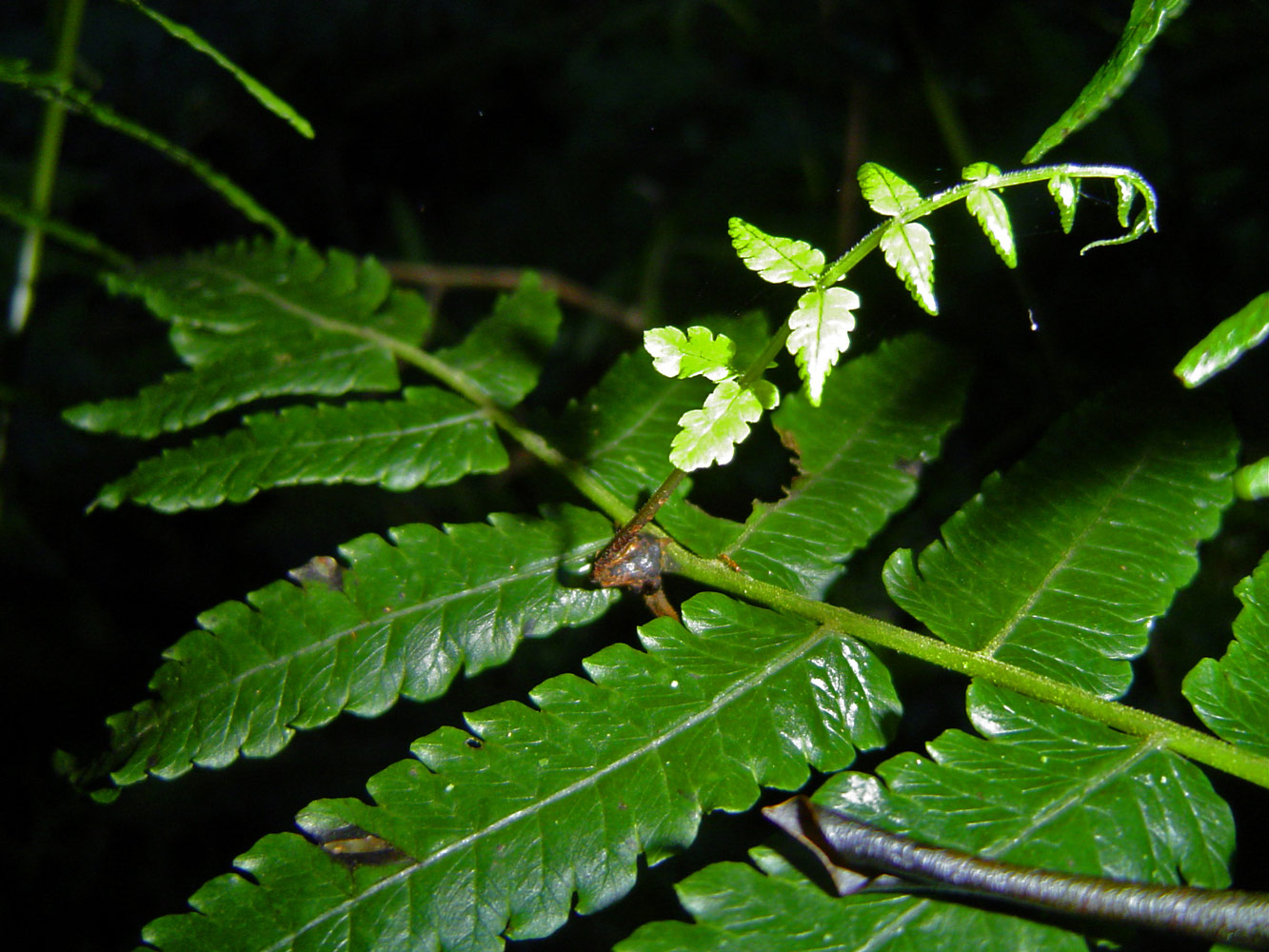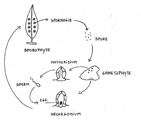Reproductive structure
1. Vegetative reproduction
In some ferns the rachis produces a vegetative bud or gemmae, these ferns are called proliferous. When this bud falls on the ground a new plant develops, as in Tectaria gemmifera. Sometimes however the new plant will already start to grow while still being attached to the rachis. Through the weight of this small plant, the frond will bend towards the ground. When it makes contact with the soil, the small new fern can start to root. Pneumatopteris unita, Asplenium sandersonii are good examples of this.
2. Sexual reproduction
The spore bearing leave or sporophyte carries the sporangia that will burst open once the spores are matured. These mature spores do not straight away grow into a new fern. If the spores germinate they form a gametophyte, a hardly noticeable tiny heart shaped plant of about 1/2 inch wide. This gametophyte carries the male (antheridia) and female (archegonia) organs. Sperm is produced in the antheridia, an egg develops in the archegonia. The sperm has long flagella which makes it possible for it to move to the egg. This however can only happen if a film of water is present on the surface of the gametophyte; a good moist environment is thus essential. When the sperm reaches the egg, fertilization takes place and a new fern (sporophyte) develops.

